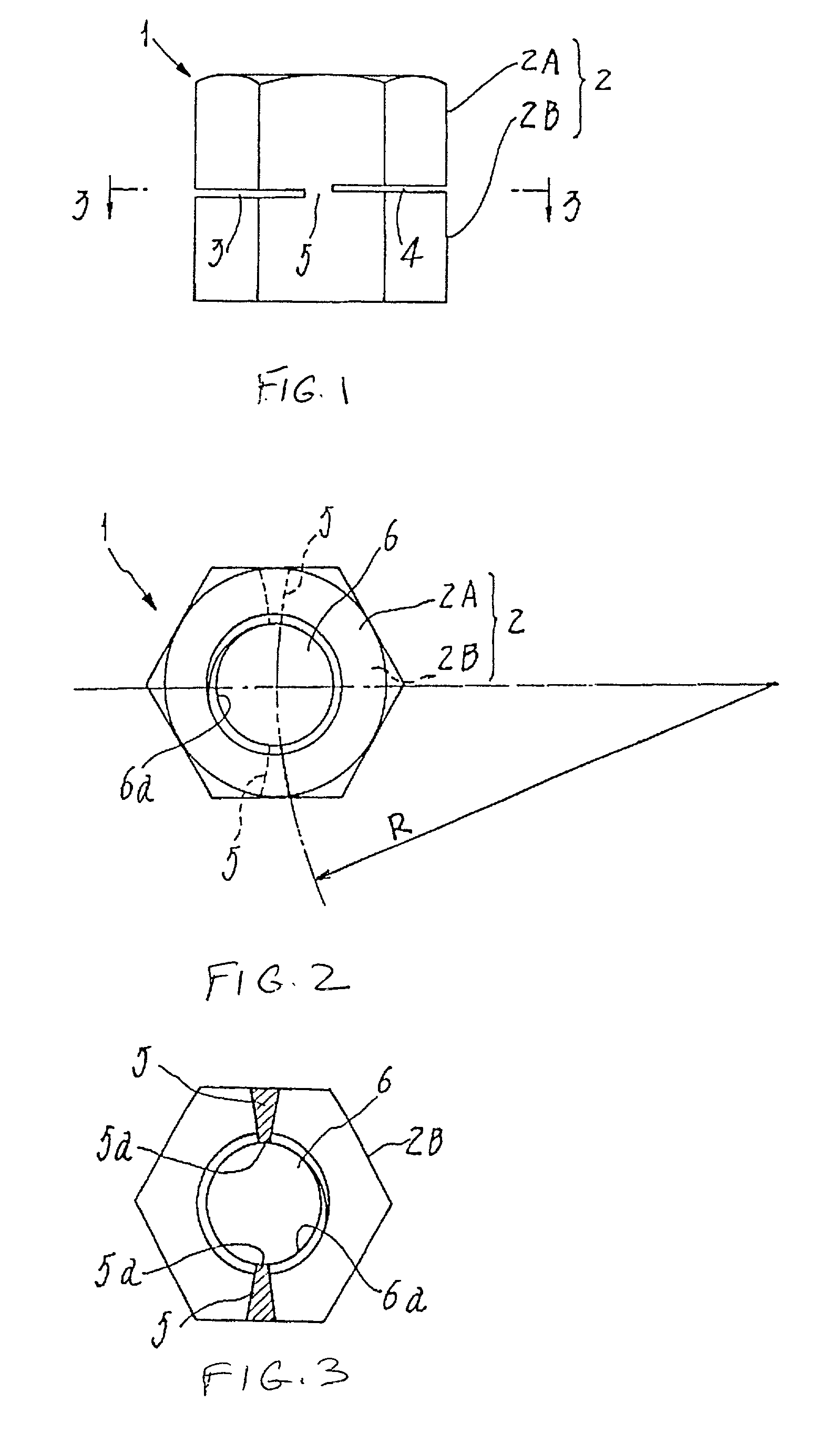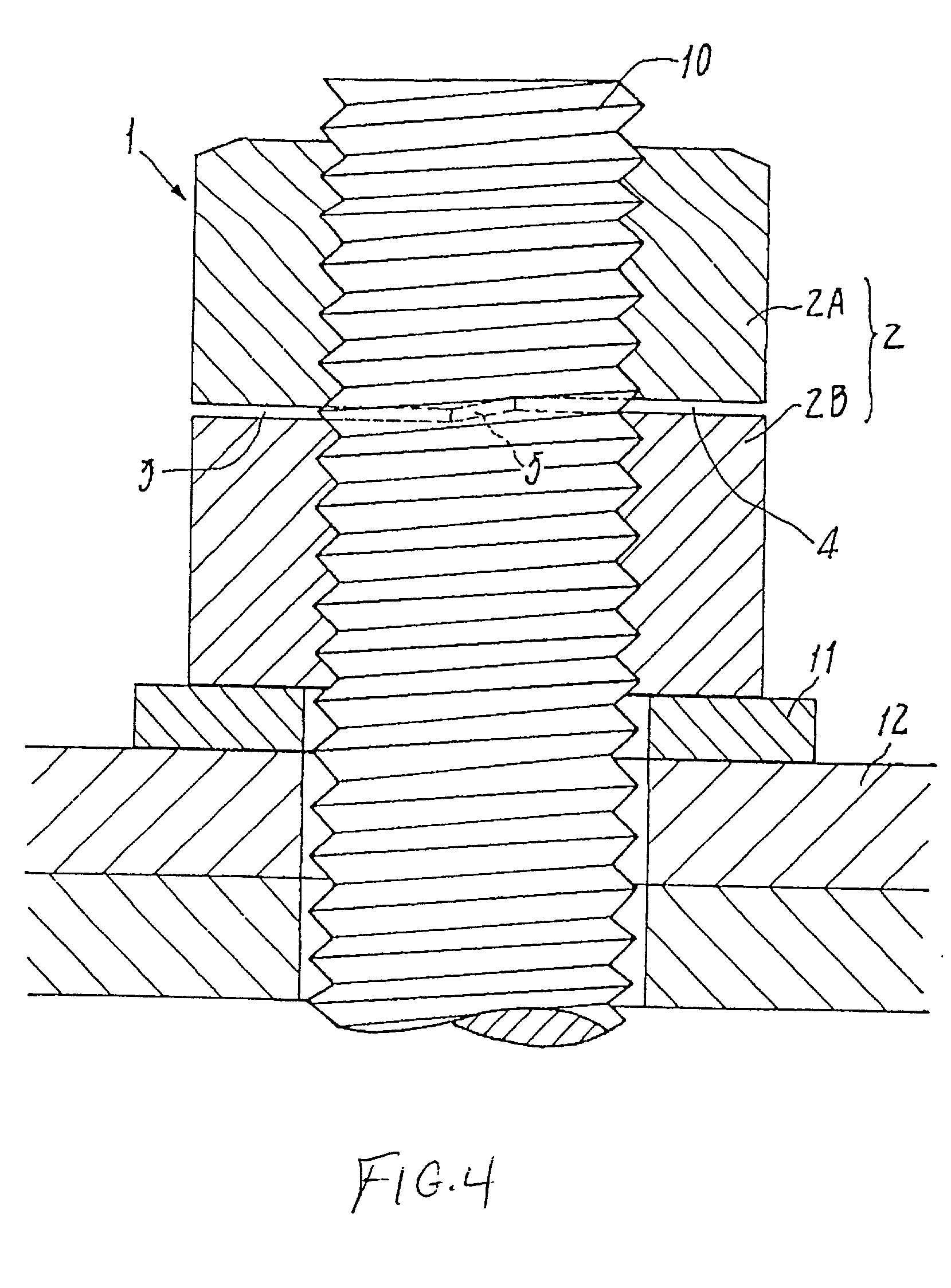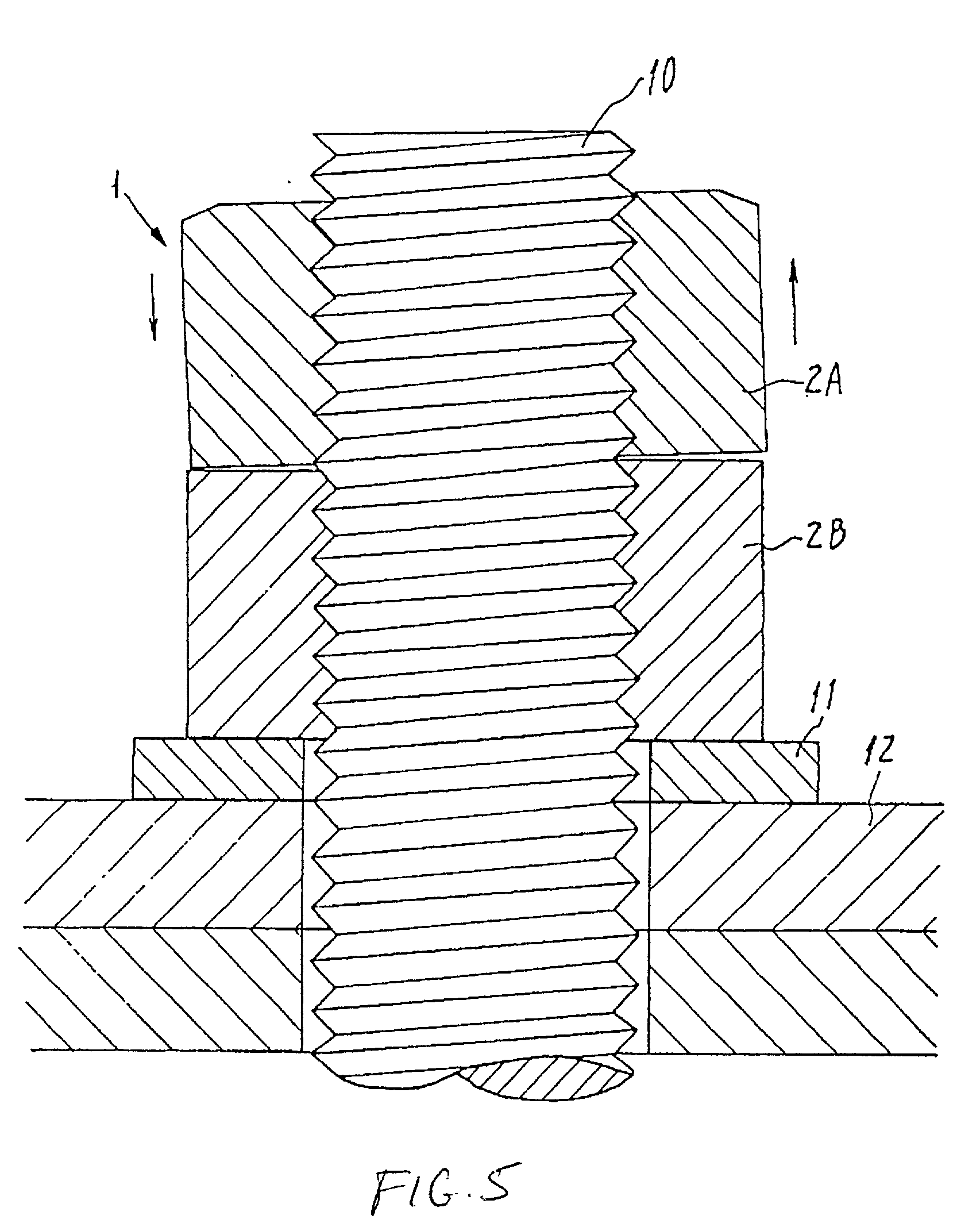Self-locking nut
a self-locking and nut technology, applied in the direction of screws, load-modified fasteners, fastening means, etc., can solve the problems of large deviation in the tightening torque and difficulty in developing a practical nut, and achieve the effect of uniform shearing strength and easy machining of the crush section
- Summary
- Abstract
- Description
- Claims
- Application Information
AI Technical Summary
Benefits of technology
Problems solved by technology
Method used
Image
Examples
Embodiment Construction
[0020] FIGS. 1-3 show self-locking nut 1 in accordance with the teachings of the present invention, nut 1 being longer than the conventional hexagonal nut. In the mid section of the main nut unit 2, a pair of cut out grooves 3 and 4 are cut opposing each other from the outer circumference surface to the axis core. The nut is separated into upper nut 2A and lower nut 2B, with both nuts 2A and 2B formed between cut out grooves 3 and 4, and mutually connected by two crush sections 5 that have oblong small cross sections stretching toward the radius direction. As shown in FIG. 1, cut out grooves 3 and 4 are placed so that they are slightly offset in the direction of the axis. Both grooves are placed on a flat surface directly intersecting the axis line of main nut unit 2. As it will be explained hereinafter, this enhances the locking effect. Specifically, in the event the measurement of main nut unit 2 is M12 and P1.5, the width of the cut out grooves 3 and 4 are approximately 0.5 mm an...
PUM
 Login to View More
Login to View More Abstract
Description
Claims
Application Information
 Login to View More
Login to View More - R&D
- Intellectual Property
- Life Sciences
- Materials
- Tech Scout
- Unparalleled Data Quality
- Higher Quality Content
- 60% Fewer Hallucinations
Browse by: Latest US Patents, China's latest patents, Technical Efficacy Thesaurus, Application Domain, Technology Topic, Popular Technical Reports.
© 2025 PatSnap. All rights reserved.Legal|Privacy policy|Modern Slavery Act Transparency Statement|Sitemap|About US| Contact US: help@patsnap.com



